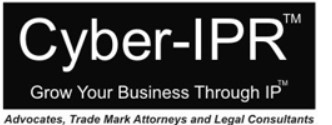Patent Law
If you have ideate a new way to improve the quality of your products or its functionalities; or more efficient ways to produce it while reducing costs. Congratulations…
You should protect your invention through a PATENT.
What is a patent?
A Patent is a statutory right for an invention granted for a limited period of time (20 years) to the patentee by the Government, in exchange of full disclosure of his invention for excluding others, from making, using, selling, importing the patented product or process for producing that product for those purposes without his consent.
Basically, it is a deal between the inventor and the Government, wherein 20 years exclusivity over invention is being given to the inventor. After 20 years, it will be in the public domain and anybody can use it without permission of the inventor. For example, a generic drug.

Patent protects ideas (say top of the mountain)
…whereas copyright protects expression of ideas (say different ways of reaching top of the mountain)

An invention relating either to a product or process that is new, involving inventive step and capable of industrial application can be patented.
Patent is grants an exclusive right for an invention, either a product or process, that is new, involving inventive step and capable of industrial application.
Conditions of Patentability
- Novelty
Novelty or new invention is defined as “any invention or technology which has not been anticipated by publication in any document or used in the country or elsewhere in the world before the date of filing of patent application with complete specification, i.e., the subject matter has not fallen in public domain or that it does not form part of the state of the art”. (Section 2(l) of the Patents Act)
This means that your invention must not have been made public before the date of the application. - Inventive step or Non-Obviousness
Inventive step is defined as “a feature of an invention that involves technical advance as compared to the existing knowledge or having economic significance or both and that makes the invention not obvious to a person skilled in the art”. (Section 2(ja) of the Patents Act)
This means that your product or process must be an inventive solution. It cannot be a solution that would be obvious to a manufacturer/person skilled in the same field. - Industrial application
Industrial applicability is defined as “the invention is capable of being made or used in an industry”. (Section 2(av) of the Patents Act)
This criterion implies that it must be possible to actually manufacture the new invention.- Computers, networks
- Software, data storage devices, emails
- Electronic devices (cell phones, ATM machines etc)
The categories of inventions mentioned under sections 3 and 4 of the Patents Act are non- patentable. For examples,
-
- a mathematical or business method or a computer programme per se or algorithms. Section 3(k)
- plants and animals in whole or any part thereof other than microorganisms but including seeds, varieties and species and essentially biological processes for production or propagation of plants and animals. Section 3(j)
LIFE CYCLE OF A PATENT APPLICATION published by Office of CGPDTM, INDIA 2020 in Frequently Asked Questions 2020.
